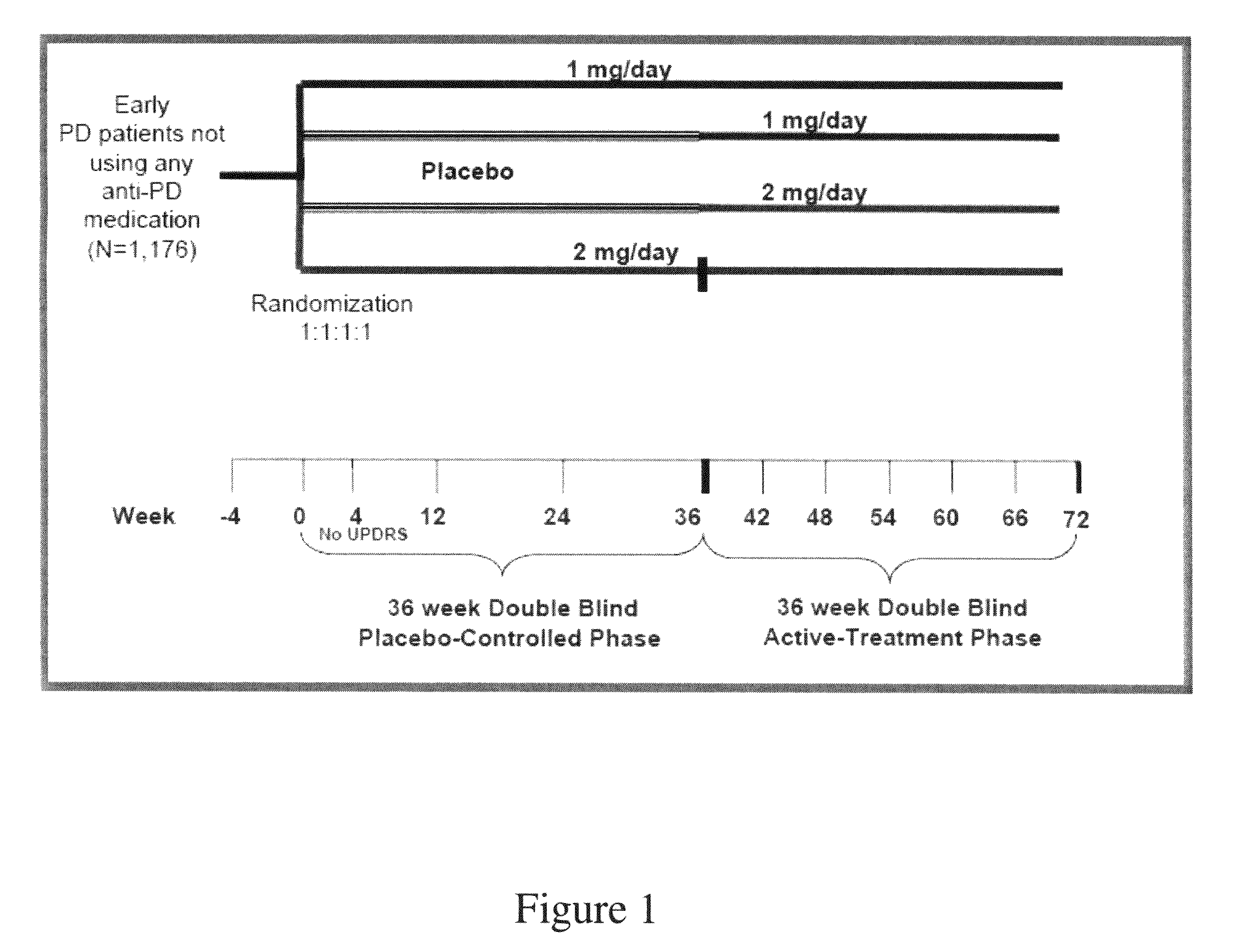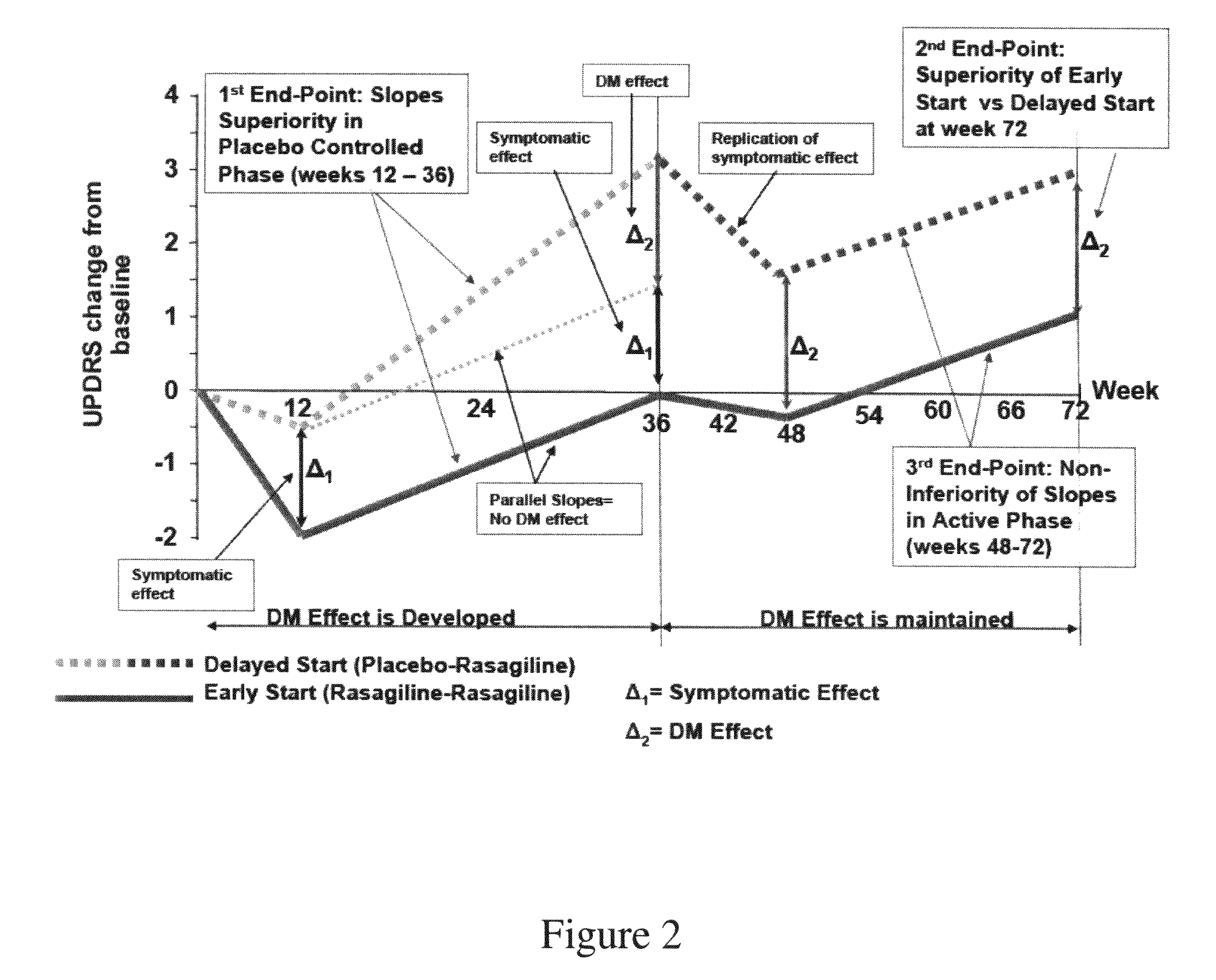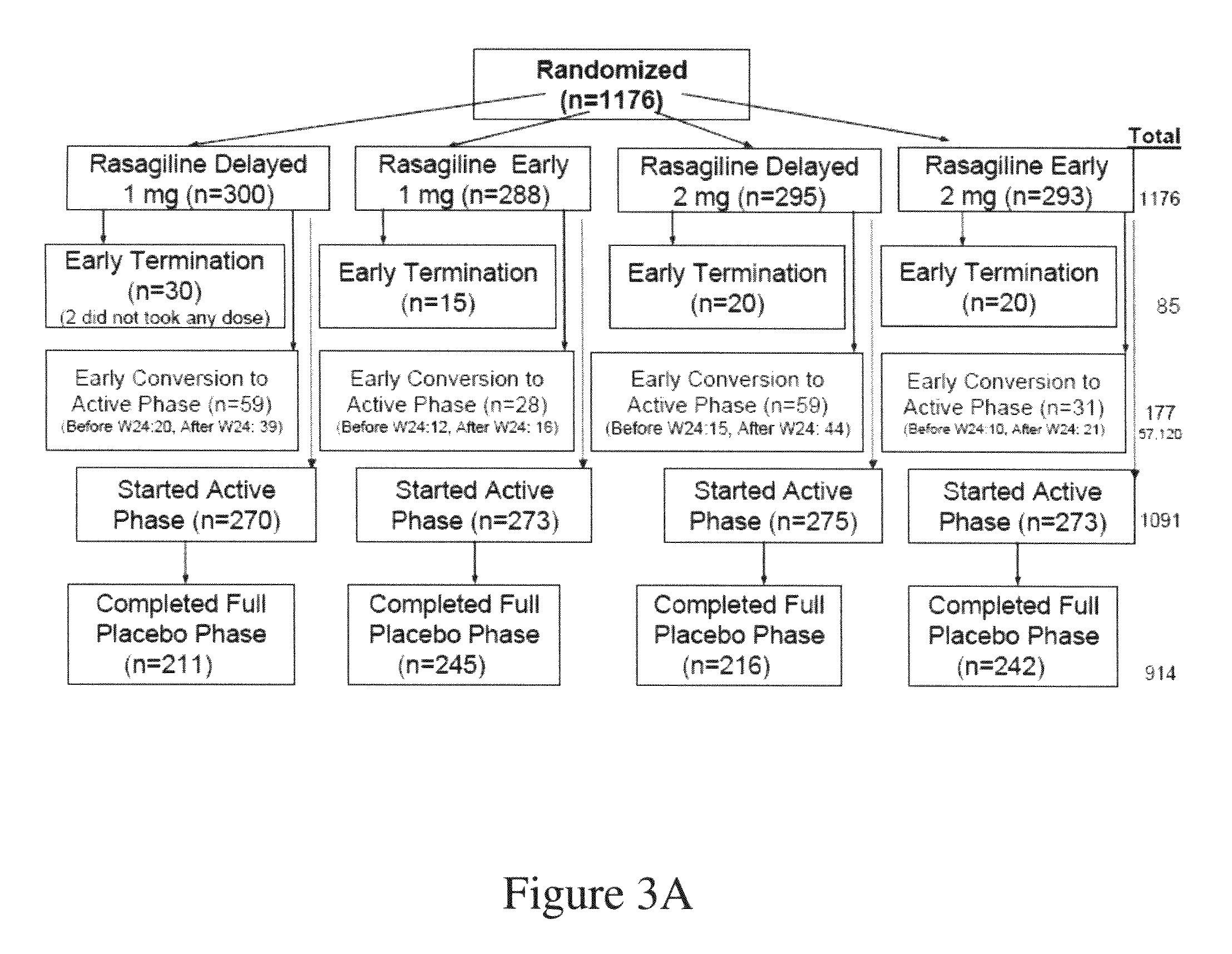Rasagiline for parkinson's disease modification
a parkinson's disease and rasagiline technology, applied in the field of rasagiline for parkinson's disease modification, can solve the problems of many pd patients suffering disability, affecting the treatment affecting the treatment effect of patients with pd, so as to reduce the progression rate of parkinson's disease symptoms
- Summary
- Abstract
- Description
- Claims
- Application Information
AI Technical Summary
Benefits of technology
Problems solved by technology
Method used
Image
Examples
examples
Evaluating Disease Modifying Effect in Early Stage PD Patients
[0362]A prospective, multi-center, placebo-controlled, double-blind clinical trial (“ADAGIO”) was conducted to show that rasagiline has a disease modifying effect in Early Stage PD patients.
Study Design
[0363]A randomized delayed start design was chosen for the study, which was comprised of 2 phases: Phase I—a 36-week double-blind, placebo-controlled phase, and Phase II—a 36-week double-blind, active-treatment phase. As illustrated in FIG. 1, after being found eligible to participate in the study, subjects were allocated in a 1:1:1:1 ratio into one of the following four treatment groups based on a randomization scheme with blocks stratified by centers:[0364]Group 1. 1 mg / day rasagiline during Phase I and Phase II;[0365]Group 2. 2 mg / day rasagiline during Phase I and Phase II;[0366]Group 3. placebo during Phase I followed by 1 mg / day rasagiline during Phase II; and[0367]Group 4. placebo during Phase I followed...
PUM
| Property | Measurement | Unit |
|---|---|---|
| time | aaaaa | aaaaa |
| time | aaaaa | aaaaa |
| time | aaaaa | aaaaa |
Abstract
Description
Claims
Application Information
 Login to View More
Login to View More - R&D
- Intellectual Property
- Life Sciences
- Materials
- Tech Scout
- Unparalleled Data Quality
- Higher Quality Content
- 60% Fewer Hallucinations
Browse by: Latest US Patents, China's latest patents, Technical Efficacy Thesaurus, Application Domain, Technology Topic, Popular Technical Reports.
© 2025 PatSnap. All rights reserved.Legal|Privacy policy|Modern Slavery Act Transparency Statement|Sitemap|About US| Contact US: help@patsnap.com



